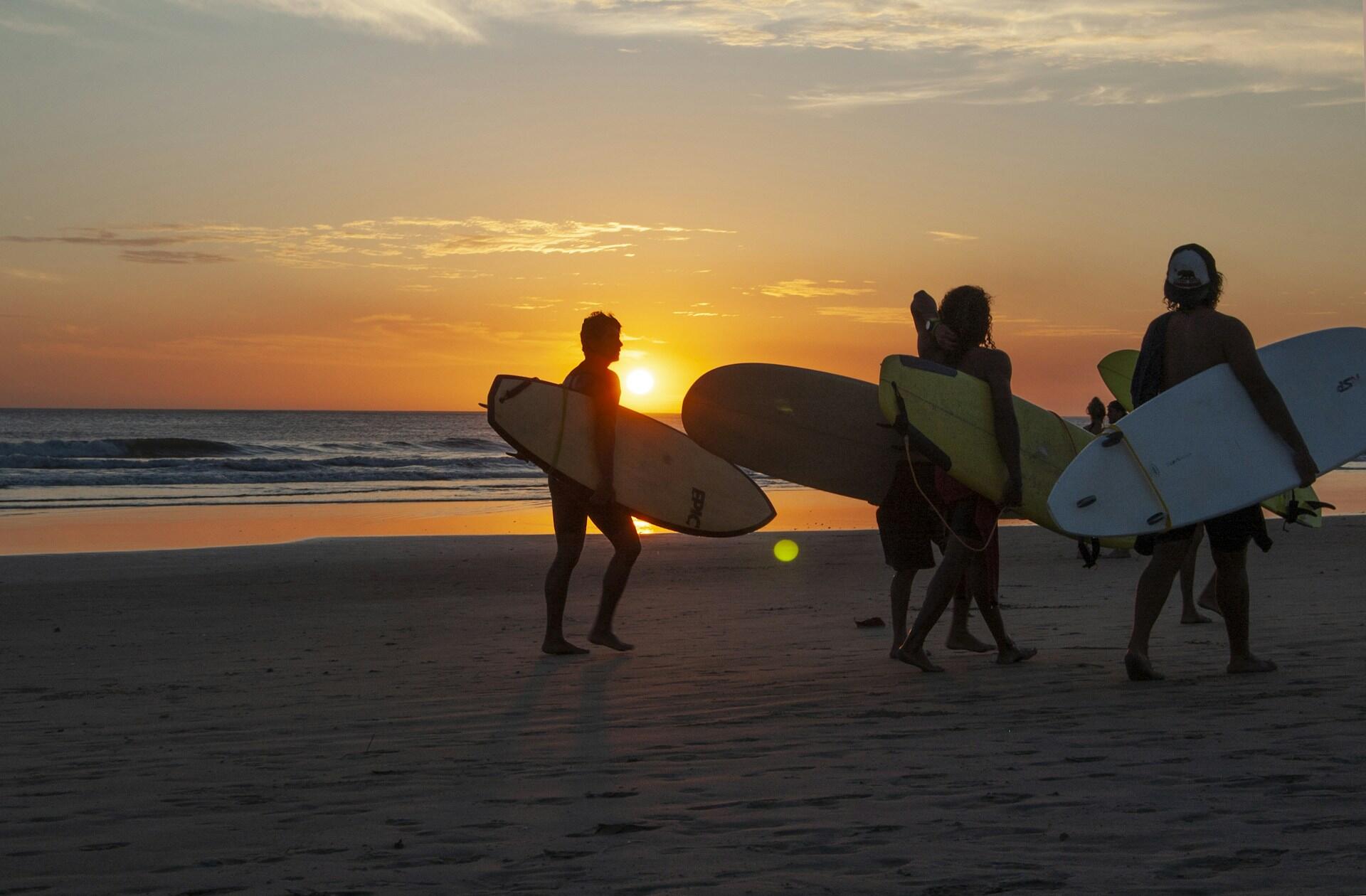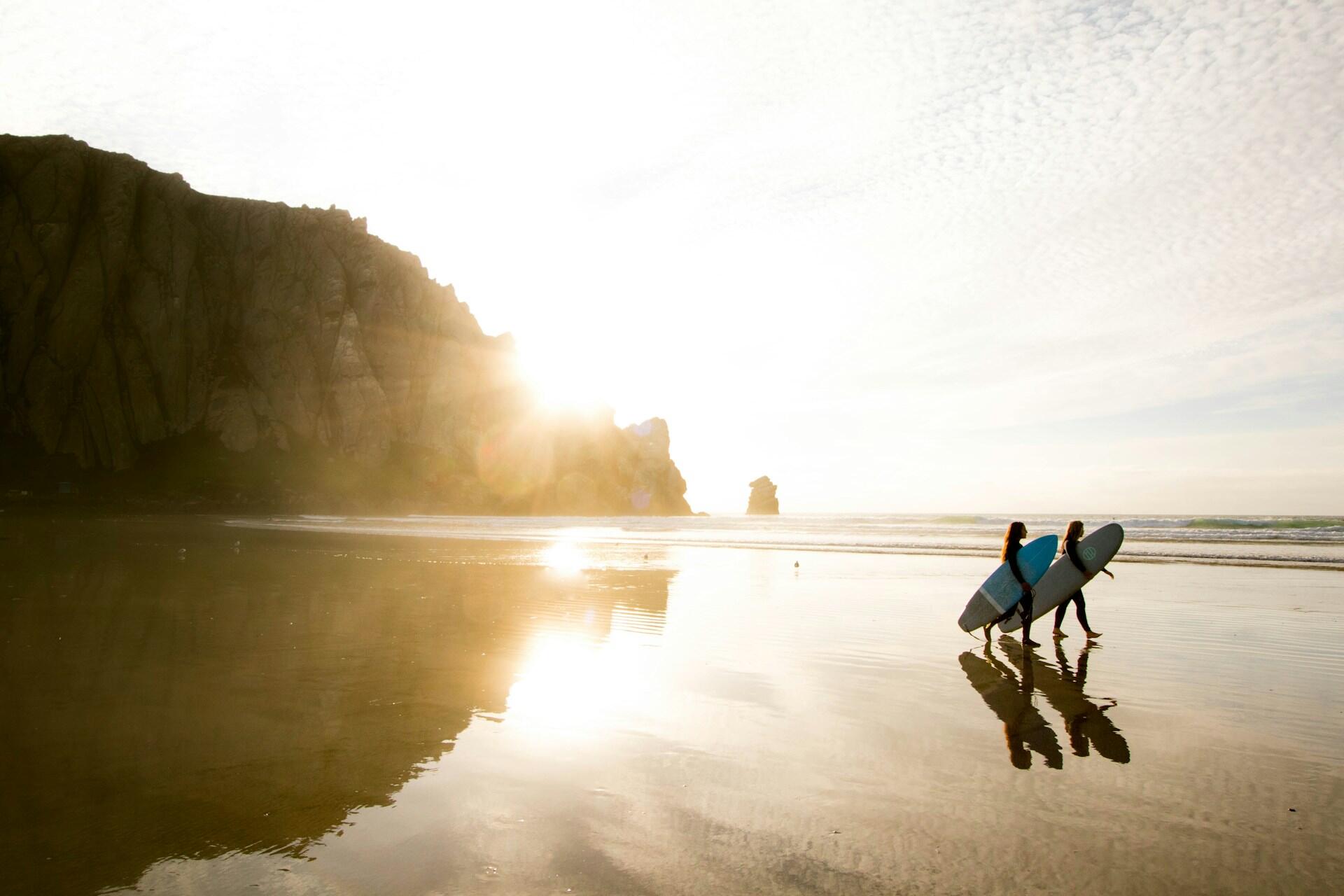To be sure, surfing techniques for beginners are all the same. You have to learn how to paddle, pop up, and keep your balance on your board. Etiquette rules are all the same too: never jump the queue, keep out of other surfers' paths, and follow safety rules. What's different is your relationship and connection to surfing, and how to honour those aspects. This surfing guide addresses both of these tracks: the personal and the technical.

How to Start Surfing: Finding Motivation and Staying Power
How many times have you gotten caught up in momentary gusto? It doesn't have to be you; maybe one of your friends has a habit of getting overly enthusiastic about something. A sport or craft activity, perhaps, or a new diet.
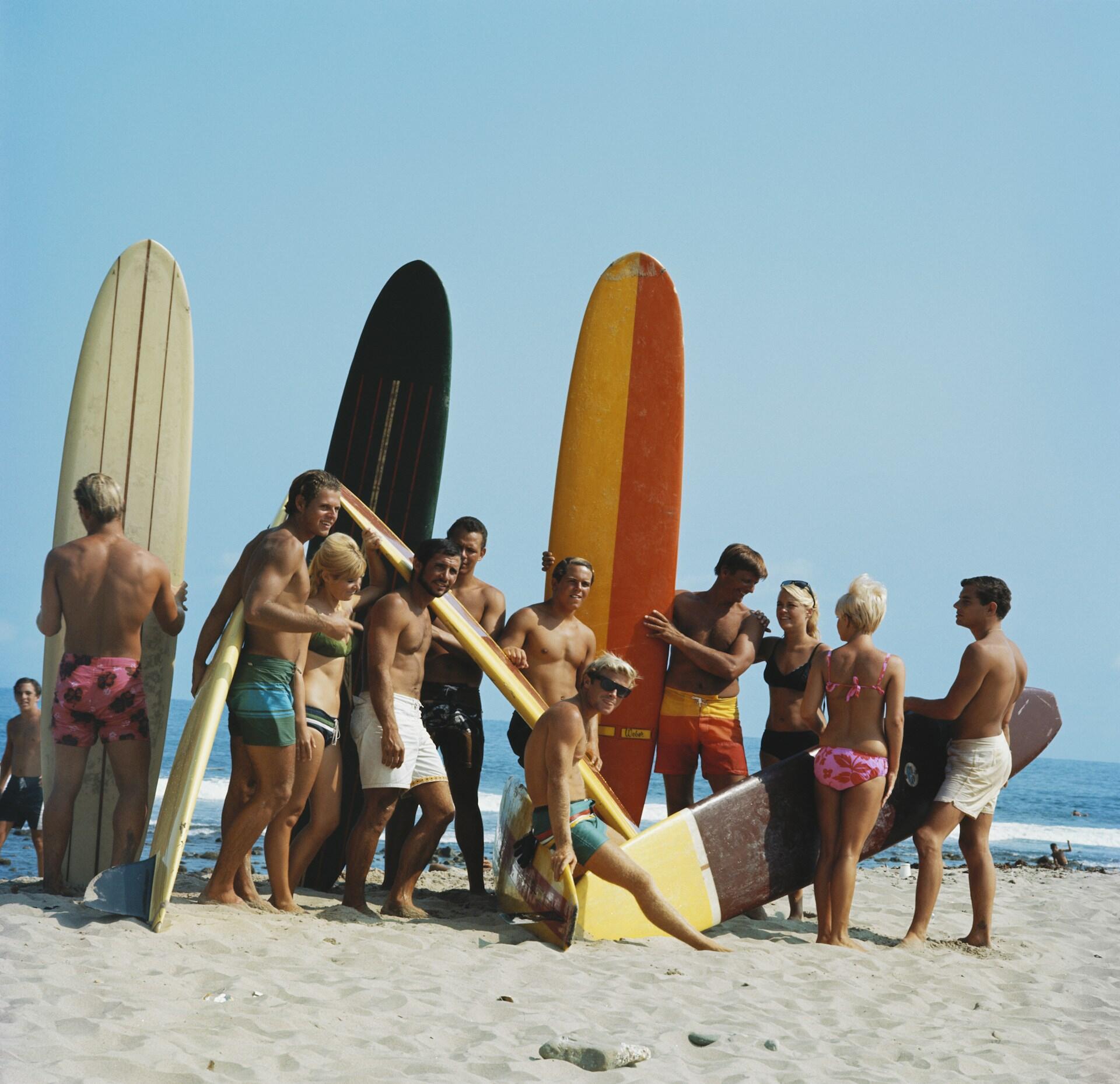
They (or you) spend wads of time and money, letting this passion consume them... For a few weeks, until the fun wears off. And then, they're out the money, have useless equipment cluttering their house, and they wonder what to do next.
Such is the case for more than one beginner surfer, if surfing blogs are reporting correctly.
It's not so much a matter of attending every single surfing class. It's more about what happens once classes are over, however long it takes you to master surfing skills. When you have to go it on your own - motivate your own surfing efforts, the drive may be lacking.
Understand that learning to surf is a process.
Take pleasure in the journey rather than finding frustration in the process.
Set realistic expectations to avoid disappointment in (seemingly) slow progress.
Taking Breaks from Surfing
Surfing instructors see this scenario playing out all over the world. Some beginner surfers can hardly contain their enthusiasm for the sport while the weather's fine and the surf's up. Then, along come the gloomy days, and surfing is no longer a priority, let alone a desire.
The cycle repeats once the fine weather manifests itself anew. Unfortunately, all the techniques are now rusty, and the learning is stale. The risk of injury is high; refresher courses are a must. How to break this cycle or, better yet, not let it start?
Invest in surfing gear to give yourself visual reminders (and financial reasons) to continue.
Keep up with surf forecasts and stay in touch with the surfing community.
Continue your surfing exercise routine even if you're not going to your surf spot regularly.
Your Exercise for Surfing Guide
Surfing is a physically intense sport, but any reasonably fit person can master surfing basics.
For example, if your workout includes push-ups, your arms and back are ready for pop-ups. That's exactly how surfers go from lying on their bellies to standing on their boards. Still, it's a good idea to build surfing-specific exercises into your workout routine.
Paddling is the most intensive work surfers do. It involves lying on their surfboards and using their arms to propel themselves into the waves. They do so many times per surfing session.
Obviously, that calls for strong arms, shoulders, and back muscles.
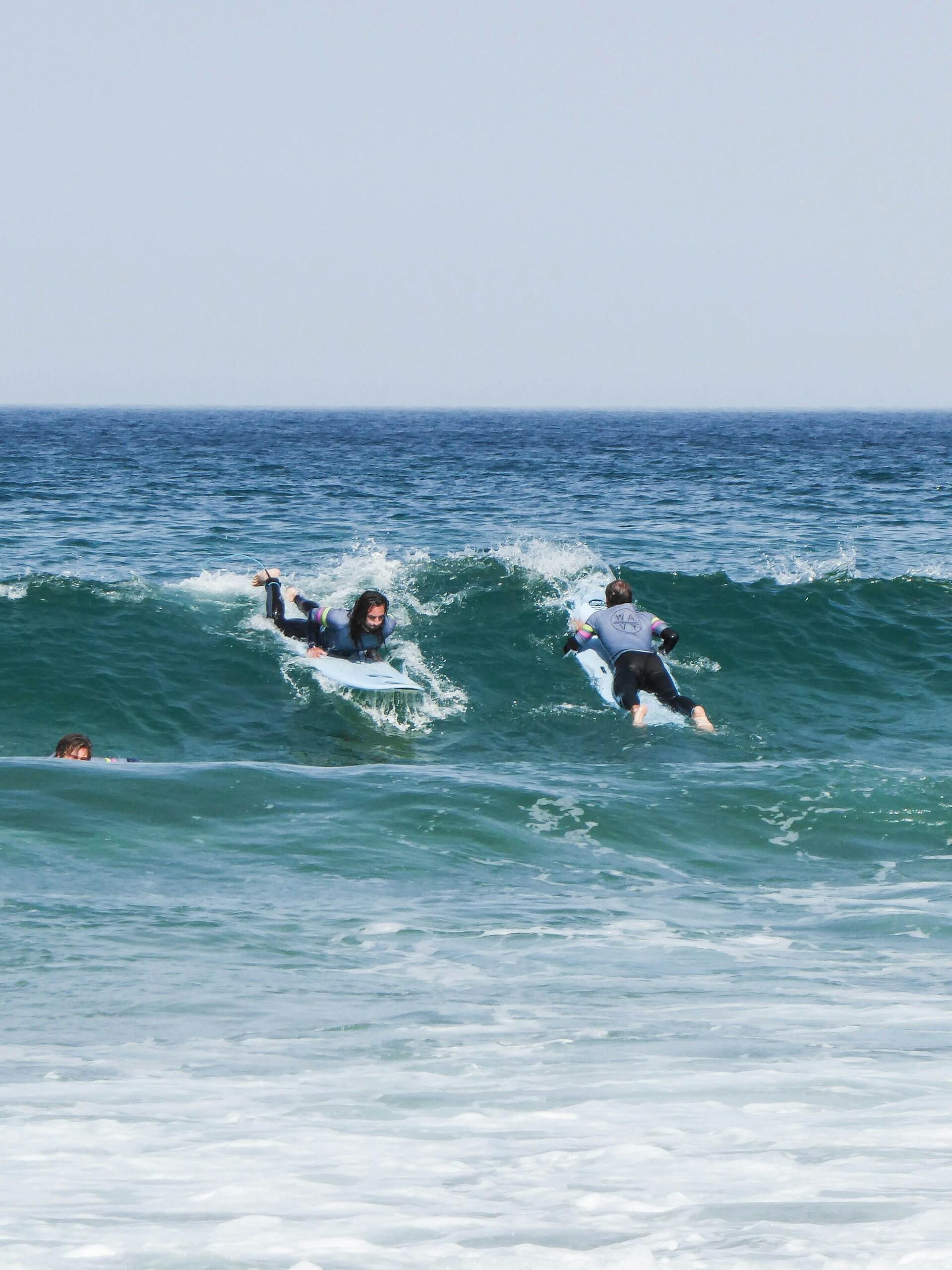
Swimming is the best way to train for the rigours of paddling because it's practically the same motion. And roughly the same degree of effort.
You can practice paddling at the gym or at home. Lie face-down on a bench with a dumbbell in each hand. 'Windmill' your arms clockwise, as though you were paddling on a surfboard.
Consider Yoga
Besides strength and conditioning, what surfers need the most are balance and flexibility. Consistent yoga practice delivers both, especially if you work selected poses into your workout routine.
You may consider an entire yoga routine beneficial to your surfing efforts. At the very least, adding these four poses to your surfing exercise routine will fill the gap standard physical workouts tend to overlook.

Surfing Techniques for Beginners
Taking lessons with a coach is a good idea, but you can learn how to start surfing on your own. However you learn surfing techniques, getting your mind and body right are the first vital steps to prepare for surfing. Once you're in that space, you're ready to take more concrete steps towards your first solo surfing outings.
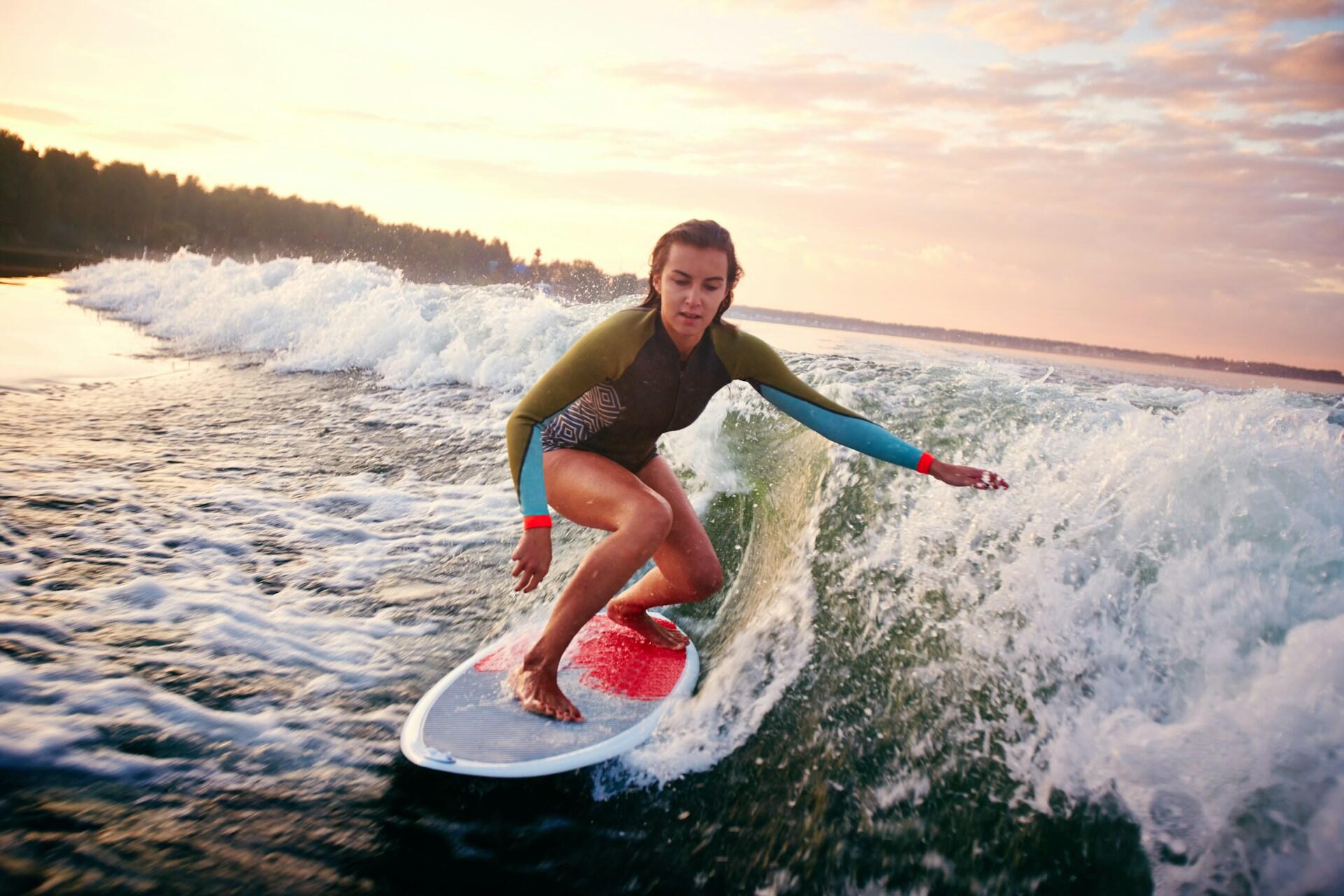
Scope out Potential Surfing Spots
A part of your pre-surf preparations involves finding ideal surfing conditions. You're looking for the types of waves you can safely surf. For beginners, waves up to one metre are more than tall enough.
You also need to know what type of break each surfing spot has. A sand break delivers unpredictable waves that could come from many directions. By contrast, a reef break regulates waves.
Sand breaks: nothing but sand on the ocean floor; nothing to control the waves' direction. Reef/rock breaks: the ocean's reef or rock barriers help direct/regulate waves' travel.
If your chosen surf spot's waves are fairly straight and regimented, you're looking at a reef break. If the waves roll in from several directions, you're likely on a sand break, which will make surfing more challenging.
Learning to Time Waves
Swell period, the period of time between wave formations, is crucial for successful surfing sessions. Talk with experienced surfers there to learn how they time waves to decide if that's a good surfing spot for you. Essentially, it involves looking out to where the waves form, and counting the seconds between when the waves crest.
Learn How to Read Surf Forecasts
Swell size, swell periods, and swell direction are all part of surf forecasts. Indeed, they're the most important information such forecasts deliver. Top Australian surf forecasts deliver up-to-the-minute conditions for every surf spot around the country.
Consult several forecasts to decide which surfing spot to have your session at. Don't rely solely on surf forecasts to predict the best spots; visit them and talk with other surfers.
How to Start Surfing
If you've made it this far, you're ready to get in the water (after you survey conditions, of course). Do a few stretches while you're still on the beach, shed your street clothes and slip into your wetsuit (if you have one). Make sure your board has a fresh coat of surf wax on it, and walk right in.
With that brief tutorial digested, we move on. Ideally, you'll walk in until the water is waist or chest height, depending on how tall you are. Always mindful of other swimmers and surfers, mount your board and begin paddling.
- Lay on your belly, about 1/3 of the way down your board.
- Point the board's nose directly into the waves.
- Begin moving your arms to propel yourself forward.
- Continue paddling until you reach the lineup, resisting pushback as described in the video.
- Sit up on your board and use your legs to maintain your position until it's your turn to catch a wave.
A Word About Surfboards
Even at this point, when you're past taking surfing lessons, you don't have to have your own board yet. You can continue renting surfboards until you find the one that suits your skill level and surfing style.
Longboards, especially soft-tops, are ideal at this stage. Still, you should learn about the different types of surfboards and which conditions they're meant for.

Common Beginner Mistakes
Not following surfing etiquette is a beginner's biggest mistake. Surfing etiquette includes:
- Paddle around waves' peaks; stay out of surfers' way.
- Respect the lineup: surfers who paddled out before you catch the next wave.
- Also, never 'drop in' on another surfer (claim the same wave they're surfing). Wait your turn!
- In case of a wipeout, get yourself and your board out of the way as soon as possible.
Failure to follow the "If in doubt, don’t paddle out" creed isn't just a rookie mistake; it can have grave consequences.
Failing to read conditions - weather conditions, surf conditions, and even your own mental-physical state, can also have serious consequences. No surfer worth their board would tackle the waves without properly assessing themselves and their surf spot.
Tips for Beginner Surfers
Your first surfing sessions without a coach are going to be exciting. There's nothing wrong with feeling high anticipation, as long as your heightened spirits don't make you reckless. And as long as you don't forget the essentials. Those include everything from vital pieces of equipment to getting psyched to catch your first wave.
To minimise those risks, print out this cheat sheet, laminate it, and tuck it into your equipment bag. It covers everything this article talks about without all the extra text.
| 🧩Aspect | 🤔What to remember | 🤓Why it's important |
|---|---|---|
| Mind and body | ||
| Learning how to surf is a process. | So you don't get frustrated early in your training or during your first solo outings. So you don't give up before achieving success. So you don't take unnecessary risks. | |
| Being flexible and fit takes constant effort. | Don't let the off season sap away your surfing fitness or your desire to surf. | |
| Safety | ||
| Check conditions; read surf forecasts, inspect the surf spot, talk with other surfers. | This is vital information for your physical safety. | |
| Equipment: a leash for your surfboard, a rashie, goggles, sunblock, and first aid kit. | To minimise injury risks. | |
| Wipeouts: jump away from your board. Get out of the wave zone as soon as possible. | Keeps the board from hitting your head. So you won't put oncoming surfers on a collision course. | |
| Surfing etiquette | ||
| Never try to claim another surfer's wave | It's rude, selfish and dangerous. | |
| Stay out of other surfers' paths | Most surfing injuries are due to collisions. | |
| Technical skills | ||
| Time the waves Ideal: between 8-10 seconds | Helps determine if conditions are right for your skill level. | |
| Paddling Paddle into the waves, outside the wave zone. | So the waves won't toss you about. So you won't cause a collision. | |
| Recovery after a wipeout. | Minimise the risk of injury to yourself and others. |

